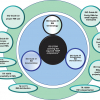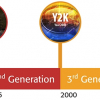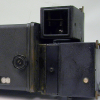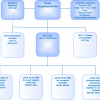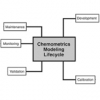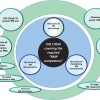J.P. Hammond
Starna Scientific Limited, 52/54 Fowler Road, Hainault, Essex, IG6 3UT, UK. E-mail: [email protected]
In the last Quality Matters, “Looking back in anger”, we set the scene and discussed the evolution of ISO/IEC 17025 to the present date. In this article I discuss recent events relating to how the accreditation environment is evolving, and key aspects relating to it.
One of the key areas relating to the production, use and accreditation of CRMs is the establishment and proof of traceability. “Traceable to a National Metrology Institute (NMI)” is an often-used terminology. Personal experience has shown that, in some instances, this traceability chain can be somewhat “stretched”, if it is present at all; and the degree of traceability from what would first appear to be similar quality vendors can vary considerably.
The concern is that, recently, there is an increasing trend to use a similar scenario where “accreditation to ISO 17025” is being stated and promoted in a corresponding non-specific marketing statement. It is only on further investigation, when the published schedule of accreditation is investigated, is the actual scope of the accreditation revealed, and at that point “...not all accreditations are the same”.
Clearly, the governing accreditation bodies, for example, International Laboratory Accreditation Cooperation (ILAC), European Co-operation for Accreditation (EA), Asia Pacific Laboratory Accreditation Cooperation (APLAC) etc. need to be made aware of this trend, and hopefully respond. However, in the meantime, one would suggest that when considering the purchase of any reference material from an “accredited” new source, one should seek out the published Scope of Accreditation relating to the certification, and ensure that the desired requirements are stated, at the appropriate level. Given the allowed use of “flexible scopes” in many instances, however, this may not always be as simple as stated, and the term “caveat emptor” may also be appropriate, with further specific and direct questioning of the vendor prior to purchase, an advisable course of action.
Recent developments
On to recent related events. On 26 October 2012 at the 16th ILAC General Assembly in Rio De Janeiro, Brazil, the following resolution was adopted:
ILAC Resolution GA 16.20
As ISO Guide 34:2009 includes normative references to ISO/IEC 17025 and ISO 15189, the General Assembly resolves that accreditation of reference material producers is conducted in accordance with ISO Guide 34:2009 alone. This resolution rescinds ILAC resolution 8.12.
Resolution 8.12 stated:
“…that accreditation of technically competent bodies producing reference materials with assigned values will be conducted against harmonized criteria based on ISO Guide 34 and ISO/IEC 17025 in combination.”
“In practice, the normative reference to ISO/IEC 17025 still requires the use of all appropriate and relevant sections of this standard, for the manufacture and production of a Certified Reference Material (CRM).”
“However, related to the above comments, this change in requirement now opens up the debate that reference material producers may be accredited to ISO Guide 34, but within the scope may not be producing Certified Reference Materials?”
On 10–14 June 2013, the ISO Committee on Reference Materials (ISO/REMCO) held its annual meeting by invitation of Standards Australia (SA) and the National Metrology Institute Australia (NMIA).
In the convivial surroundings of the Circular Quay area of Sydney, there was a structured programme of plenary sessions and working group meetings, which also initiated many constructive deliberations and debates into the topics under review. The focus of the annual meeting was centred upon two key areas. First, the new guidance areas on “In-house Reference Materials”, “Commutability” and “Metrological Traceability”; and second, the normative and advisory support guides to ISO Guide 34:2009, which are being updated to match current requirements. Unlike the programme of recent years, this extensive documentation workload unfortunately did not allow for any associated Workshops on specific topics at this meeting.
The plenary sessions included reports from the ISO/REMCO Chair and the ISO Secretariat, and introduced, and then discussed the additional three key topics of:
- a revised scope for ISO/REMCO (formerly “Terms of Reference”);
- a review of the status of ISO Guide 34;
- the on-going discussion on “commutability”.
The current official scope for ISO/REMCO was approved in 1975. Because of the developments in the area of reference materials (RMs) and its terminology, an update was considered and discussed in more detail. The revised scope is subject to approval by the ISO Technical Management Board (TMB) and once this has been ratified will appear in a future issue of Spectroscopy Europe.
Always a topic for discussion, and again commented on in this update article, the use of ISO Guide 34 as a standard for Reference Material producer accreditation by many national bodies was reviewed. Recent documentation revisions have again rekindled the debate.
Discussion on “commutability”: At the meeting, ISO/REMCO reviewed and discussed a draft of an explanatory note on the issue of commutability of reference materials. There were discussions in how far “commutability” affects a wide range of measurement areas and measurands. It was accepted that the preponderance of complex molecular species and measurands defined in terms of biological function in measurements for medicine and life sciences requires special attention for commutability there. The positive comments received from IFCC (International Federation for Clinical Chemistry and Laboratory Medicine) and ISO TC 212 to this draft supports this statement. The task ahead, however, is still, to clearly define when “commutability” of a reference material is required, across all measurement types. ISO/REMCO has the intention to publish the final version of this document in the public area of the REMCO webpage and in the open literature.
In addition to these new discussion items, as stated above, the current ISO/REMCO work programme covers the following Guides and Technical Reports in support of ISO Guide 34:2009.
- Publication of ISO Guide 80 (Guidance for in-house preparation of RMs for internal quality control). This long awaited guide is now in its last stages of revision, prior to publication by ISO.
- Revision of ISO Guide 35 (RMs—general and statistical principles for certification). After publication of ISO Guide 34:2009 which outlines, among others, the modern principles of the production of RMs, the technical guidance on the characterisation and certification of RMs has to be updated now. Therefore, the ongoing revision of ISO Guide 35:2006 aims at explaining the related current, metrological valid approaches.
- Revision of ISO Guide 30 (Reference materials–selected terms and definitions). After extensive discussion, the latest draft of the Guide is now focused on terms related to the production and use of RMs, other terminology on measurements etc. is left to vocabularies such as ISO Guide 99 or the IUPAC Orange Book.
- Revision of ISO Guide 31 (RMs–contents of certificates, other documentation and labels). A revised text will be produced for discussion during the next REMCO meeting. The new edition of the Guide will clarify the difference in the documentation required for RMs in general compared to certified RMs specifically.
- Revision of ISO Guide 33 (RMs—good practice in using RMs). A revised version was under ballot within ISO/REMCO and the proposed changes will be incorporated into a draft guide for voting among ISO members in 2013. The new edition of the guide will include the uses of all types of RMs, and will provide clear guidance on when it is appropriate to use a non-certified reference material in the measurement process and for which purposes a certified reference material should be used.
- ISO Technical Report (TR) 79 (RMs for qualitative analysis—testing of nominal properties). Despite the considerable interest on the topic expressed by REMCO members and a number of organisations in liaison, it seems to be difficult to formulate guidance because of a lack of corresponding quality assurance concepts. Therefore, the meeting had no option but to accept the suggestion that this report will be limited to selected examples of reference materials certified for nominal properties.
- ISO TR 16476 (Current status of establishing and expressing metrological traceability of quantity values assigned to RMs). As ever, a hotly debated topic, and a draft of the TR which had been circulated was discussed, and several contentious points debated.
Peripheral to the main committee business, but in many instances equally important as a source of coordination and future developments, it was noted that during the first plenary, the ISO/REMCO Secretary presented (on behalf of the Liaison Coordinator) a summary of the reports from members and liaisons.
The main points included more than 1000 new RMs produced by them during the past year; some new guidance documents; a few new accredited RM producers; and considerable training activities. Most of the documents from ISO/REMCO directly affect work in other (international) organisations. Moreover, it is important to avoid duplication of efforts and, where possible, to share resources, namely, the limited number of experts. Therefore, ISO/REMCO has given a strong mandate to its Liaison Coordination convenor to ensure good communication.
As can be seen from this report, in 2013/14 and prior to the 37th meeting of ISO/REMCO in Boulder, Colorado (USA) next year, the process of revision and generation of guidance continues at a pace.
In conclusion, we may not only have a generation of “angry young managers” but also a real “Tiger by the Tail” with respect to Reference Material accreditation?


